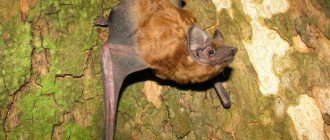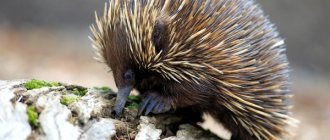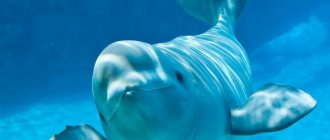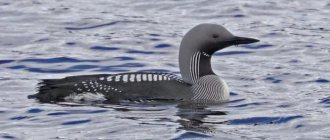The stickleback fish belongs to the ray-finned family, the order of sticklebacks. Its distinctive features are the absence of scales, the presence of several spines on the back (their number depends on the species), two spines on the abdomen and fused pelvic bones, forming the so-called abdominal shield.
The stickleback fish uses its needles in case of danger. In a calm state, the spines are adjacent to the body, but when attacked by a predator, it spreads them out so that they stick into the enemy’s mouth. Since these fish are well protected, they have practically no enemies. They are very voracious, so any bait is suitable for fishing. With a significant number of individuals in the population, they stay in large flocks.
This little fish lives only three to four years. It grows to the size of an adult by one year, and at the same time becomes sexually mature.
Classification and description of stickleback fish
Based on the type of water, they are divided into freshwater, seawater and anadromous.
The freshwater fish lives and breeds only in fresh water bodies and never enters the sea.
The marine fish lives in the sea and goes to coastal waters to spawn.
The migratory species lives in sea water and breeds in fresh water bodies. If after spawning it does not have time to leave the river, it dies. Newborn individuals gradually move into the sea.
There are several types of smelt, which differ in the number of needles on the back: three-spined, four-spined, nine-spined. In addition, they also include sea stickleback, southern stickleback and brook stickleback.
Subclass Bony fish
Scorpionidae
The large family of bony fishes, Scorpaenidae, includes many poisonous species, characterized by their brightly variegated colors and sharp, long spines on their fins. The cavity of the spines contains poison, the toxicity of which varies among different species of the family. Typically, the injection causes acute burning pain, blueness and necrosis of the skin around the wound, local swelling, weakness, high blood pressure, nausea and uneven breathing. Scorpionfish have long, hollow, poisonous spines in their dorsal fins and pose a serious danger to humans. They are especially numerous and diverse in tropical seas.
Banded lionfish , named for their striking red, white and purple striped coloration, are widespread on the coral reefs of the Red Sea and Indo-Pacific. These are very beautiful and graceful fish with large fan-shaped pink fins and long needle-like spines, especially poisonous and long in the dorsal fin. An accidental prick from such a thorn causes sharp pain, followed by deterioration of the condition and, in extreme cases, paralysis of the skeletal and respiratory muscles. That is why these beautiful bright creatures are so slow and unhurried, proudly soaring in the secluded corners of the reef with fanned fins: they have nothing to fear.
Lionfish are nocturnal predators, so divers should swim especially carefully during night dives, when lionfish hunt for fish in the beam of a flashlight and sometimes follow divers in whole schools. In the Caribbean Sea and the Gulf of Mexico, the accidental introduction of lionfish has caused an environmental disaster, since there are no natural predators in this basin, and the lionfish themselves are voracious and reproduce quickly. Local diving instructors are exterminating lionfish and trying to accustom local reef sharks to new prey, but so far they have not been very successful.
Tourists who first find themselves in the seething underwater world of the Red Sea somewhere in Hurghada already encounter lionfish at a depth of ten meters. There are especially many of them on sunken ships, in caves, crevices and depressions, where they hide from sunlight in order to go hunting at night. The beauty and external harmlessness of lionfish pleases the eye: you just want to touch this popular “fashion model”. But remember that it is better to keep your distance.
The most famous is the common lionfish, or lionfish (Pterois miles, P. volutans), it is also the largest lionfish in size and the most poisonous and dangerous to humans. Smaller and more graceful are the radiant lionfish Pterois radiata, the African lionfish P. mombasae and the zebra fish Dendrochirus zebra.
Warts
These deadly monsters, also called stone fish (Synanceiidae), are perhaps the most dangerous sea creatures. The striped lionfish is a real angel compared to them. They really look like stone: with their round, clumsy body shape, their motley-gray camouflage coloring, and their immobile lifestyle; in addition, adult specimens are usually overgrown with crust-like calcareous algae. The wart is difficult to spot on the seabed among rocks and corals, so accidents with divers usually occur due to accidental contact. Even when an acute burning pain appears, a person does not immediately understand what happened - the stone-fish hides so skillfully at the bottom.
Science knows 10 types of warts, differing in size, location and size of spines, toxicity of poison and some other features. All of them are common inhabitants of coral reefs in the Indo-Pacific, Australia, Indonesia, the Philippines and the Red Sea. The most common, poisonous and dangerous is the ocean wart Sinanceia verricosa. The dorsal fin of the wart contains 13 poisonous spines, enclosed in a kind of sheath in a calm state. The three front spines are larger and more mobile than the others: for example, the third spine in some species reaches 4 cm in length. When a careless person touches or steps on a dorsal spine, the cells of the poisonous gland located in the wall of the sheath are compressed, and the poison is injected into the wound along the grooves of the spine. The poison shoots out with such force that when the thorn was touched in the experiment, it erupted like a fountain to a height of 15-23 cm! The short and thick spines of the wart pierce not only neoprene, but also thick rubber knee pads and the sole of the boot. According to descriptions of people who survived the injection, they had never experienced such terrible pain in their lives, and some even lost consciousness under water from the shock of pain.
Australian aborigines, who have lived “side by side” with shallow-water warts for centuries, know some plants that heal not only from severe internal injuries, but also from acute pain in the affected area. Thus, the leaves of a herb with the romantic name “goat’s foot” and the ashes of a white mangrove tree, prepared in a special way, relieve pain and put the unfortunate person back on his feet within a day. Now scientists are trying to understand the mechanisms of the medicinal effects of these plants. Recently, Australia received a specific antidote for warts - it has not yet gone on general sale, but is already in service with local medical institutions.
Photo by Dmitry Portnov
A person pricked by a fish stone should be immediately examined and, if necessary, perform cardiopulmonary resuscitation. Then the affected area of skin with a characteristic bluish tint is placed in hot water, which somewhat eases the pain, and wait for specialists to arrive with an antidote. It is not difficult to avoid a tragic date with a stone fish: it is enough to refrain from walking in shallow water barefoot or in shoes with thin soles, do not touch corals and stones with your bare hands and do not fumble with them out of curiosity in caves and crevices. Always maintain neutral buoyancy and enjoy the beauty of the coral reef from a safe distance.
Where does it live?
Especially a lot of stickleback can be found in the Baltic and White Seas. It is found in the rivers of Western Siberia, in the lower reaches of the Dnieper, in the Northern Donets, in the reservoirs of the Black, Azov and Caspian Seas, in the ilmens in the Astrakhan region. Can be found in the Volga and rivers of the Volga basin.
Stickleback fish loves quiet places with calm currents. These can be small grooves, rivers, lakes with a sandy or muddy bottom and banks covered with grass.
Three-spined and nine-spined ones live in all European countries. In Russia, stickleback habitats are rivers flowing into the White and Baltic seas, rivers of the Far East, reservoirs of the Leningrad region, and Lake Onega.
Stickleback lives along the entire coast of Europe, from Norway to the Bay of Biscay. Its habitat is marine areas off rocky shores.
The southern small one is found in desalinated areas of the Azov, Black and Caspian seas, as well as in the rivers that flow into them. Also lives in the lower reaches of the Dnieper and Northern Donets.
Popular types
Sticklebacks have 5 genera and from 8 to 18 species. They differ in the number of needles and habitats.
Three-Eyed
This is the most common species of stickleback, in Latin - gasterosteus aculeatus. There are 3 spines on its back. The body color is silver, with a greenish-brown back. During the spawning period, the females' breasts become bright red and their backs bright green. The size of the fish is 5-6 cm. It lives in fresh water bodies of Europe, northern Asia and Africa, and North America. There are anadromous and freshwater morphs of the threespine stickleback.
Four-needle or bloody
Unlike most other species, it has completely bare skin, without bone plates. It lives in salt and brackish water in the area of Newfoundland and South Carolina.
Nine-needle
The number of spines on the back is 9 or 10. The body of the fish is elongated. The back is brownish-greenish with black stripes, the belly is silvery. During the spawning period, the males turn black and the lower spines become white. It is smaller in size than a three-needle. Found in fresh waters of the Scandinavian region, Japan and Siberia.
Sea or fifteen-spined
It has the largest number of spines on its back - from 14 to 16. It has a slender, elongated body. Reaches a size of 17-20 cm. The back and tail are greenish-brown in color, the sides of the fish are golden. During the spawning period, males turn blue. The sea fish stickleback lives only in salt water. It is found along the European coast of the Atlantic Ocean from the Baltic Sea to the Bay of Biscay. Unlike other sticklebacks, it does not form schools.
Southern small
This spiny fish has a relatively thick body with a large head. It grows from 3 to 6 cm. The abdominal shield is much wider than that of other species. It lives in the Azov, Black and Caspian seas closer to the mouths of large rivers, and in the lower reaches of rivers that flow into these seas. Forms a number of local forms.
Ruchevaya
This stickleback fish has from 4 to 6 needles, usually 5. It grows up to 6 cm. The color is grayish, but during the spawning period the males become bright red. The fish is found in river and lake waters of North America.
Description of stickleback reproduction
Fish spawning time is most often April-May. A few days before this, they change color - they become brighter. Their fertility is low - only 100 eggs laid.
The peculiarity of this species is that the stickleback fish equips a nest for laying eggs. And it is not the female who does this, but the male. He digs a hole in the sand with his mouth, then transfers pieces of silt, algae, grass there and lays out the bottom. For strength, all this is held together by mucus secreted from the sides of the fish. The ball-shaped nest has two holes located opposite each other. Sometimes it is half hidden in the mud and is difficult to detect.
After the place is equipped, the male returns to the flock, selects a female ready for laying and drives her into the nest through one of the holes. The female lays eggs and exits into another hole, after which the male enters the nest and fertilizes the laid eggs with milt.
After this, the male remains at the nest and guards it, keeping enemies away. This continues for about two weeks until all the young fish that have hatched from the eggs leave the nest. And before that, he closely monitors the offspring, not allowing them to go far from the nesting site.
Subclass Cartilaginous fish
Stingrays
Photo by Alexander Anisimov
Rays and sharks form a subclass of cartilaginous fish. Its name itself speaks of their characteristic feature: the skeleton, including the skull and spine, is built not from bone, but from cartilage tissue. That is why they do not have gill covers, and their teeth are nothing more than modified scale plates. In addition, cartilaginous fish do not have a swim bladder, which is characteristic of other fish that make up the subclass of bony fish. Stingrays breathe in a unique way: inhale through special holes on the back - the so-called squirters; exhale through the gill slits on the ventral side. The variety of stingrays is great: from tiny and harmless ordinary stingrays to huge sea devils weighing one and a half tons.
Flat, leaf-shaped stingrays, as a rule, lead a benthic lifestyle, lying most of the time on the surface of the bottom or partially hidden in the sand. Their bad habit of burying themselves in the sand and camouflaging themselves well is associated with waiting for prey. A motionless stingray patiently watches for mollusks and crustaceans, and when they, without noticing anything, approach the hunter, it attacks them with lightning speed from an ambush. Most stingrays, which make up the five families, are non-aggressive creatures, but some are capable of causing significant harm to humans under the right circumstances.
Stingrays
The Dasyatidae family unites more than 60 species, reaching quite decent sizes: 2 meters in length and 5 meters in width, not counting the tail, and having 1-4 sharp spines on a long tail. Spikes, like teeth, are outgrowths of scale plates. Such a spine, reaching 40 cm in length in large stingrays, is covered in a calm state with a leathery sheath, under which there are poisonous glands. When attacking the victim, the cover is pulled back and reveals a jagged spike with two grooves, along which poison flows into the wound made by the tip. With a strong blow from the tail, the spines break off and remain in the wound. The blows of the tail are often so strong that they can easily pierce clothing, wetsuits and even shoes or fins.
Stingrays never use their weapons to attack humans. Accidents usually occur due to the carelessness of swimmers. The ability of stingrays to camouflage leads to the fact that a person walking in shallow water accidentally steps on it or passes in close proximity. An instant blow from the tail follows, and a jagged spike pierces the foot, causing sharp pain. You need to walk noisily through the shallow water, dragging your feet, so that the stingrays swim out of your way in advance. Another risk group is scuba divers: often picking up shells, pieces of coral and various objects lying on the bottom, a diver may not notice a lurking stingray and receive an unexpected blow to the hand. Lacerations from jagged thorns often cause infections, especially since they are located on the feet or hands. If a thorn pierces a large blood vessel, dangerous bleeding begins, fraught with large loss of blood.
Poisoning by the secretions of the poisonous glands is accompanied by necrosis of surrounding tissues, severe pain, weakness, convulsions, impaired breathing and cardiac function. Although thousands of people suffer from stingray stings every year (approximately 1,500 per year in the United States alone), deaths are extremely rare. According to published data, in recent years, 17 people have been killed by stingrays, and death occurred for various reasons: from large loss of blood, tetanus, myocardial necrosis; in some cases the spike entered a lung or major artery. The most famous fatal case occurred with Australian TV presenter Steve Irwin, who was accidentally hit in the heart by a stingray while filming.
After being hit by a stingray, the bleeding should be stopped immediately. The wound is washed and sterilized, local anesthesia is given and fragments of the thorn are removed, which often requires qualified surgical intervention. During the mating period, stingrays gather in huge flocks of tens and hundreds of individuals, smaller males literally stick around large females, and this celebration of life makes a colossal impression.
Electric ramps
The peculiar family Torpedinidae includes more than 30 predatory species of the genus Torpedo (Torpedo sp.), equipped with powerful electrical organs located on the sides in the front of the body. They consist of many well-shaped disks, the totality of which resembles a honeycomb. In one organ there are up to 375 discs filled with a gelatinous substance. The mechanism by which they produce alternating current with a power of up to 220 volts is still unclear, but it is undoubtedly effective: the stingray wraps its fins around the prey and paralyzes it with a powerful electric discharge.
Photo by Stanislav Mikos
Electric rays are distinguished by their rounded shapes, flat bodies up to one and a half meters long and round fins with a variety of variegated colors.
Eagle Rays
Photogenic spotted cuties from the eagle ray family Myliobatidae reach 2 meters in fin span and weigh 350 kg. The eagle, which lives in temperate and tropical seas, is one of the favorite models of underwater photographers, but few people know that the long, thin tail has poisonous spines. The symptoms of injury from thorns are the same as those caused by stingray stingrays. The most famous species among divers is the spotted eagle ray Aetobatis narinari.
Sharks
Sharks are not only voracious predators, but some are also actively poisonous. Spiny, or dogfish, sharks from the family Squalidae have sharp poisonous spines protruding in front of the first and second dorsal fins of the same structure as the spines of stingrays: the lower part is covered with a leathery sheath covering the poisonous gland. When pressure is applied to the spine and, consequently, to the gland, a toxin is released. It is well known that the common dogfish Squalus acanthias is safe as a predator, but many do not realize that it is poisonous and can bring great trouble to a careless swimmer or a fisherman who catches it.
Nutrition
Stickleback fish eat a wide variety of foods. These are mainly small inhabitants of reservoirs, namely crustaceans, worms, insect larvae, plankton, benthos (organisms living at the bottom of a reservoir). In addition, they are able to eat eggs and young individuals of other fish and even their own species.
They hunt moving prey at night. Hunting is especially successful during the full moon, since they require at least a small amount of light. The stickleback is very active and chases small fish. Having discovered the prey, it rushes towards it, quickly grabs it with its jaws, stretching them forward, and closes its sharp teeth, leaving the victim no chance of salvation. Other sticklebacks, seeing such a picture, rush to her in a school in the hope that they, too, will get food.
Diseases - prevention and treatment
Sticklebacks are fairly unpretentious and persistent fish. Their illnesses mainly have an external source.
Types of diseases
Sticklebacks caught from natural bodies of water can develop dermatomycosis, caused by mold fungi of the Saprolegnia and Achlya species. This can be caused by stagnant water and insufficiently fresh food. Unwashed plants can also become a source of the disease. The fish begin to scrape against the bottom, decorations and plants. Their behavior loses vivacity, their movements become more sluggish. Later, the fungus appears as a coating on the body and fins, similar to cotton wool. Sick fish are immediately separated and placed in a 2% salt solution or a weak solution of potassium permanganate at the rate of 1 g per 100 liters of water. The aquarium must be completely disinfected, including washing the plants and boiling the sand and decorations.
IMPORTANT : As a preventive measure, it is advisable to place all fish in the same 2% salt solution for at least half an hour before planting them in the main aquarium.
The fish are also susceptible to diseases caused by parasites – ergasilosis and argulosis. These are small crustaceans of the corresponding species, which fish become infected with from crustaceans that act as carriers. Ergasilids parasitize on the gills, and argulus parasitize on the skin. Sick fish eat poorly, lose weight and become restless. Treatment is carried out using a solution of chlorophos or potassium permanganate.
How to catch
They catch stickleback from the bottom. It is of little interest to fishermen because it has no nutritional value. Rather, it is an amateur activity, for example, for children and teenagers. Since she is very voracious, fishing will be easy.
What to use to catch stickleback fish? She bites on maggots, worms, fish eggs, and even on a bare hook. In winter, colored jigs of various shapes and sizes are used as bait with replantings of bloodworms, worms, and maggots. Due to its size, this little thing is almost never found online.
Fishermen consider it a trash fish, but it still has some benefits. Technical fat is obtained from it, feed flour and fertilizer for fields are made.
There are fans who keep it in an aquarium at home.
Habitat
Stickleback is divided according to water type. Freshwater representatives never enter the sea. They are found and breed only in fresh water bodies. Marine fish live in sea water, but during the spawning season they swim to coastal areas.
Many stickleback fish live in European reservoirs and Western Siberia. There are very few in the Volga itself and its waters. The largest numbers of these representatives are observed in the rivers of the basin:
- Baltic;
- White;
- Black;
- Azovsky;
- Caspian Sea.
Koluha fish is widespread in the Dnieper and Northern Donets. To catch it, you need to look for places with a calm and slow current. She prefers small lakes and rivers with grassy banks and muddy bottoms. It can even live in ditches. In reservoirs with a large population of fish, they live in large schools. They begin to attack any object that falls into the water.
Because of their sharp and strong spines, sticklebacks are too tough for most inhabitants of reservoirs. With the help of spikes, they arrange a showdown among themselves. Sticklebacks eat other people's eggs, and in large quantities. Due to the absence of enemies, the thorn fish is able to breed offspring without hindrance. This fact threatens the existence of other more peaceful inhabitants of the reservoir. The lifespan of sticklebacks is quite short and is only 3-4 years.
Stickleback nutrition
This small fish is endowed with an excellent appetite. She eats any food, however, the basis of her diet consists of:
- worms;
- crustaceans;
- plankton;
- insect larvae;
- organisms living at the bottom of water bodies.
Since they are predators, they eat other types of fish, their eggs and even their fellow fish. The time for hunting is night. They choose moving fish, behave actively, and chase smaller individuals. Hunting is best during the full moon, when there is additional lighting.
At the sight of prey, the stickleback quickly rushes at its prey, capturing it with its jaws. Sharp teeth leave the victim no chance of survival. Fellow members of the pack also rush to the site of the attack in the hope of feasting on the captured prey.
https://youtube.com/watch?v=K8xRUblflh0
Reproduction and offspring
The spawning period for sticklebacks begins in early spring in April - May. At this time, the color of her body becomes much brighter. The duration of spawning lasts for 1 month. Such small fish are characterized by good fertility. She builds her nest for laying eggs at the bottom of the reservoir. The male himself equips it by digging a hole. He takes sand into his mouth and takes it to the side.
Various blades of grass and pieces of algae are used as building material. The male glues them into a dense ball, secreting saliva from the sides of the body. In a finished dwelling the size of a man's fist, he digs a tunnel.
The female is invited to the nest by the male, where she must lay eggs, on average 100-120 eggs. After this, the partner kicks her out of the nest. It independently protects the clutch after fertilization, as well as the fry after their appearance for 10-14 days.
The spawning period for sticklebacks begins in early spring in April - May
Young offspring are constantly under threat from their own parents. The female can always eat the eggs, and the male can later profit from the young. However, during the spawning period, the esophagus of the reproductive offspring becomes overgrown.
Fishing methods
For fishermen, this type of fish is not of great interest, since it has no nutritional value. Most often, children catch small fish from the bottom. Since it is voracious, such an activity will bring many pleasant moments, because the stickleback will constantly peck.
She bites well on eggs, maggots, worms and even swallows a bare hook. During winter fishing, colored jigs of various shapes and sizes are used. A worm, bloodworm or maggot of your choice is added to them. After catching it, you must carefully pick it up so as not to prick yourself on the sharp thorns.
For most fishermen, stickleback is a trash fish. However, it is used to produce high quality feed meal, fish oil and fertilizer for fields. Some aquarium fish lovers put it in home containers.
Interesting
It turns out that a monument was erected in honor of the stickleback. This sculptural composition is located in Kronstadt on the island of Kotlin and is called “Monument to the Siege Stickleback.” In besieged Leningrad, all commercial fish in the Gulf of Finland were caught, and only one small fish remained, which was not eaten in peacetime and was considered garbage by fishermen. It so happened that during the years of the blockade, stickleback fish saved thousands of people from hunger. The small spiny fish did not fall into the nets, so they caught them with shirts, nets, and bags. Cutlets were fried from it in its own fat and fish soup was cooked.
In the second medical hospital of Leningrad, stickleback fat was used to treat wounds and burns of soldiers.
The idea of the monument arose back in 1957, but the project was submitted for consideration only in 2004. On the initiative of Kronstadt veterans, it was created and installed near the Blue Bridge on the wall of the Obvodny Canal - three bronze sticklebacks on metal waves and a memorial plaque with lines from the poem “Blockade stickleback” by the poetess Aminova M. The author of the monument is sculptor N.V. Chepurnoy. The opening took place in 2005 on the eve of the 60th anniversary of the Victory.
Economic importance
Previously, this small fish was hunted in the Baltic, White and Azov seas, as well as in Kamchatka. High quality fish oil and feed meal were obtained from it. In addition, stickleback was used as animal feed and as fertilizer for fields. In besieged Leningrad, fish oil rich in carotenoids was used in hospitals to treat wounds and burns.
Currently, stickleback is a fish whose economic importance is very insignificant. She eats absolutely everything, thereby having a negative impact on the offspring of valuable commercial breeds.
External characteristics
Stickleback belongs to the ray-finned family of the order Stickleback . The name unites 5 genera and about 8 species of these representatives.
They differ in: spines located in the dorsal fin area. This small fish has no scales, and not all individuals have a ventral fin. Most often, in the fin area there is one spine or 2 soft rays. When danger arises, the sticker uses its weapon, straightening out all the sharp thorns. They pierce the enemy's body.
Stickleback belongs to the ray-finned family of the stickleback order.
There are more than 30 bone plates on the sides of the body. They act as additional protection. The stickleback fish is one of the smallest representatives of water bodies. Body length reaches 5−6 cm in adulthood. Color may vary depending on the species, including:
- four-needle;
- nine-needle;
- stream;
- marine;
- small southern;
- three-needle.
The last one listed is considered the most common. It is distinguished by a brown or greenish tint, and its belly and sides are silvery.
Catching and breeding
The stickleback spawning season ranges from March to July, depending on water temperature. The reproductive behavior of sticklebacks is interesting and unusual. Before breeding begins, males develop a reproductive phenotype: the males eyes turn blue and the throat and belly turn bright red. During the breeding season, the male leaves the school and settles at the bottom of shallow water, where he builds a nest all alone. The male collects the future incubator from aquatic plants, stems and other small things, which are combined into a single ball with the help of mucus secreted by the male.
The reproduction process is as follows:
- Males attract females with zigzag dances.
- The female lies down at the entrance of the nest to indicate that she can enter to lay eggs.
- Females lay eggs in the male's nest and then leave him alone to care for the eggs until they hatch.
- After each successful spawning, the male repairs the disheveled nest and stuffs all the eggs into it.
- The male takes care of the clutch and protects the offspring: he fans the eggs with his pectoral fins to provide them with fresh water and ward off enemies.
The fertility of thorn females is low - a maximum of 100 eggs can be obtained in one spawning. Stickleback fry can hatch in 5-10 days, depending on water temperature. Baby fish grow quickly by eating zooplankton.
Interesting fact: “Male sticklebacks are not monogamous: one male tries to bring many females into its nest to lay eggs. The male's goal is to fill absolutely the entire nest. After spawning several females, he fertilizes all the eggs at once.”
To catch stickleback, you can use different techniques, which fall into three main categories:
- Fishing. You can catch a thorn with a simple fishing line with a piece of earthworm, bloodworm or larva.
- Net. When catching stickleback, cast or barbed netting is used. It is better to use this method when the fish is in shallow water or in the upper part of the water column.
- Trap. Minnow traps are widely used, which can be made from simple improvised means, namely plastic bottles.
To attract fish into the trap, smelly baits and shiny objects are usually used, which are intended to either imitate bait or simply arouse curiosity. Very rarely, stickleback is caught on purpose; it is usually considered a trash fish or caught in small quantities for breeding in a personal aquarium.











